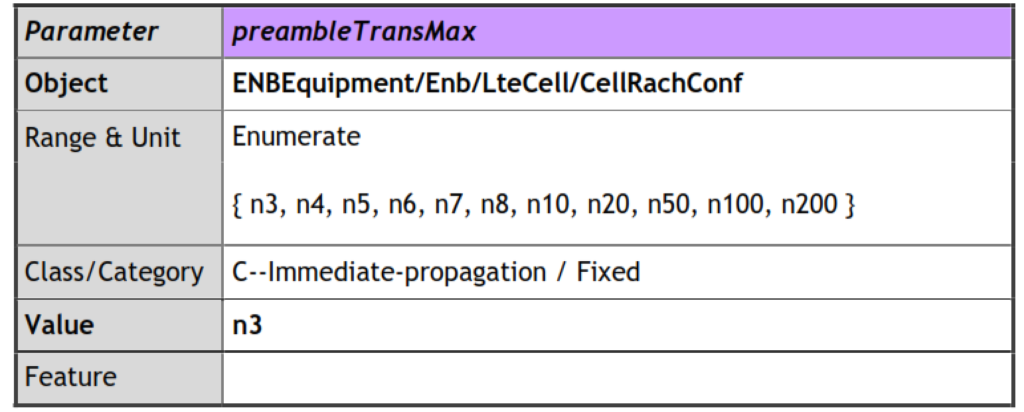The random access procedure is performed for the following five events:
- Initial access from RRC_IDLE.
- RRC Connection Re-establishment procedure (after radio link failure).
- After handover, in the target cell.
- DL data arrival during RRC_CONNECTED requiring random access procedure, e.g. when UL synchronization status is “nonsynchronized”.
- UL data arrival during RRC_CONNECTED requiring random access procedure, e.g. when UL synchronization status is “non-synchronized” or when there are no PUCCH resources for Scheduling Request available.
Note that for the last 3 events the UE already has a Cell-Radio Network Temporary Identifier (C-RNTI) while in the first 2 events the UE does not already have a C-RNTI. In the case of the handover event, the C-RNTI of the UE is allocated to it in the Handover Command.
LTE Random Access Procedure.
Furthermore, the random access procedure takes two distinct forms:
- Contention based, applicable to all five events.
- Non-contention based, applicable only to handover and DL data arrival. Note that both events, the UE already has a C-RNTI.
Parameter contentionFreeRACHenabled enables/disables the contention free
random access procedure.
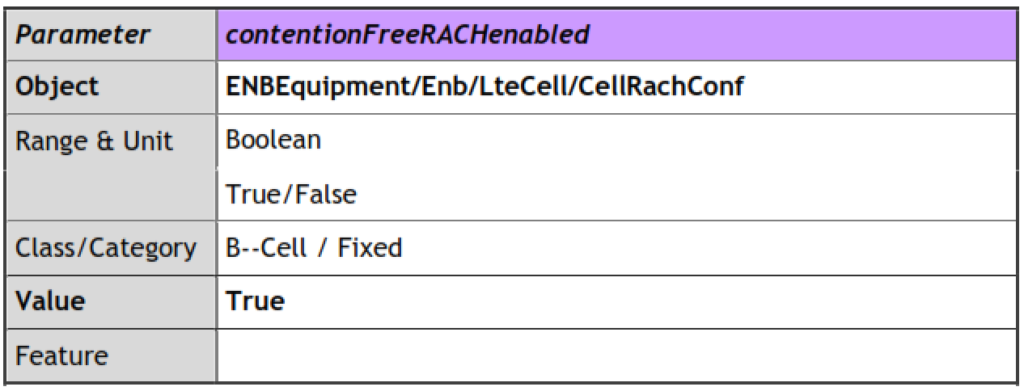
Contention Based Random Access Procedure.
The contention-based random access procedure is illustrated in Figure below:

The four steps of the contention based random access procedure are:
Message 1: This message contains the random access preamble. It is randomly selected from a set of Random Access Preambles the number of which is configured by parameter numberOfRAPreambles. Parameter preambleTransMax configures the maximum number of attempts for this message. Once message 1 is transmitted, the UE starts monitoring the PDCCH for Random Access Response (message 2) identified by the RA-RNTI.
Message 2 (Random Access Response): This message is generated by MAC on DL-SCH and intended for a variable number of UEs. It conveys a Random Access preamble identifier, assignment of Temporary C-RNTI, as well as timing advance information and initial grant for the transmission of message 3.
It is addressed to RA-RNTI on PDCCH and does not use HARQ. RACH message 2 is sent to the UE within a time window (named the RA Response window and configured by parameter raResponseWindowSize) after the transmission of RACH message1. This time window starts at subfame (N + 3) where N is the subframe where the end of the preamble
transmission occured.
If no Random Access Response is received within the RA Response window, or if none of all received Random Access Responses contains a Random Access Preamble identifier corresponding to the transmitted Random Access Preamble, the Random Access Response reception is considered not successful.
Message 3 (First scheduled UL transmission on UL-SCH):
For users that already have a C-RNTI, this message conveys, among other information elements, the C-RNTI of the UE and the RRC Handover Confirm (in case the RACH procedure is performed after handover) which is transmitted via DCCH. For users that do not already have a C-RNTI, this message conveys either the RRC Connection Request (for initial access from RRC_IDLE) or the RRC Connection Re-establishment Request (after radio link failure).
Both these messages are transmitted via the CCCH logical channel. This message uses HARQ. Parameter maxHARQmsg3Tx configures the maximum number of attempts for this message. After the first transmission of message 3, the UE starts the mac-contention resolution timer. This timer is restarted after each HARQ retransmission of message 3.
After the (re)transmission of message 3, the UE monitors the PDCCH for a PDCCH transmission (message 4), identified by either C-RNTI (for UEs that already have a C-RNTI) or Temporary C-RNTI (for UEs that do not already have a C-RNTI).
Message 4 (Contention Resolution on DL-SCH):
This message contains a UE Contention Resolution identity. It is addressed on PDCCH either to the C-RNTI (for UEs that already have one) or to the Temporary C-RNTI (for UEs that do not already have a CRNTI). This message uses HARQ. Parameter maximumNumberOfDLTransmisionsRACHMessage4 configures the maximum number of attempts for this message.
If message 4 is successfully received and the UE contention resolution identity contained in the message matches the content of message 3 (RRC connection request or RRC Connection Re-establishment Request) for UEs that do not already have a C-RNTI), the Contention Resolution is considered successful and:
o The mac-contention resolution timer is stopped.
o The UEs that already have a C-RNTI resume using it.
o The UEs that do not already have a C-RNTI promote their Temporary C-RNTI to a C-RNTI.
If the mac-contention resolution timer expires, the contention resolution is considered not successful. Parameter macContentionResolutionTimer configures the mac-contention
resolution timer.
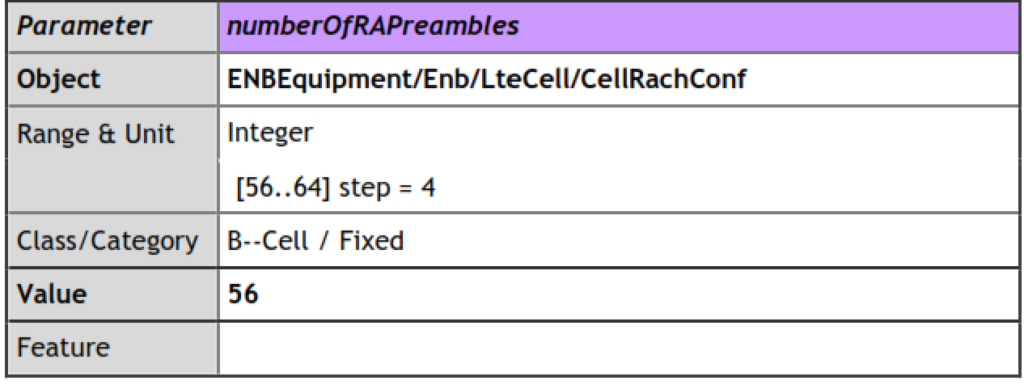
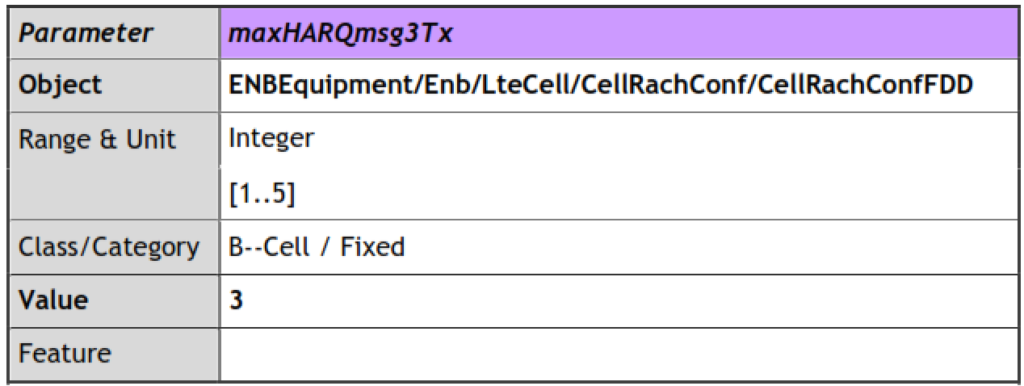
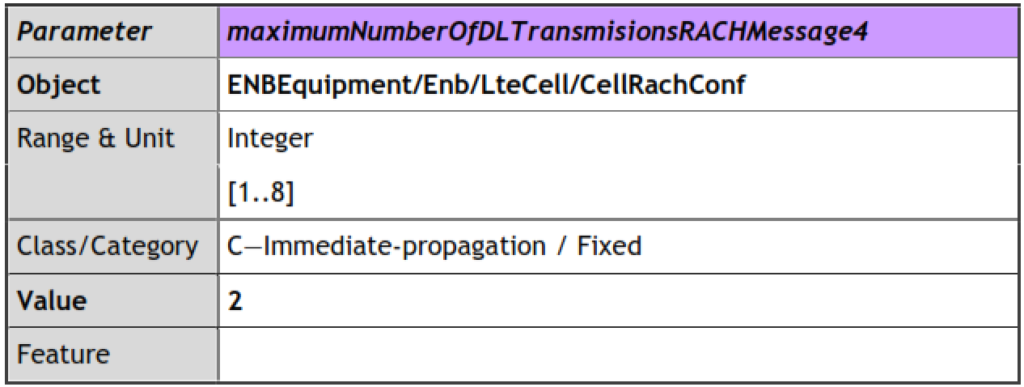
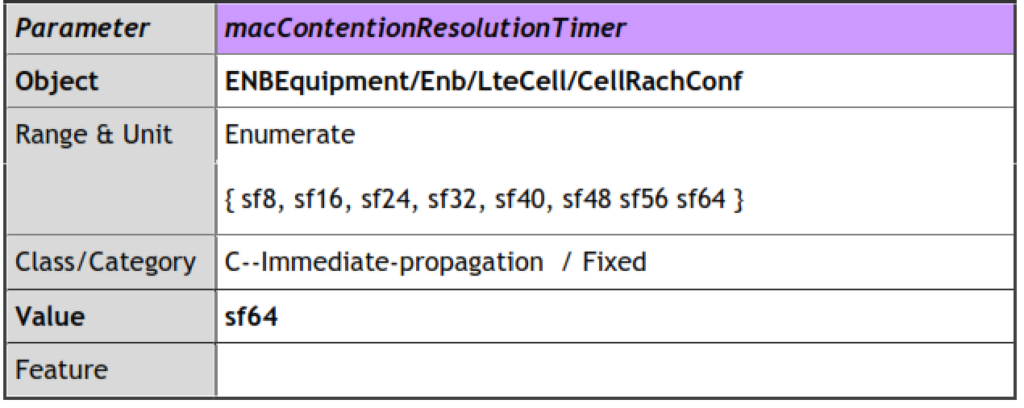
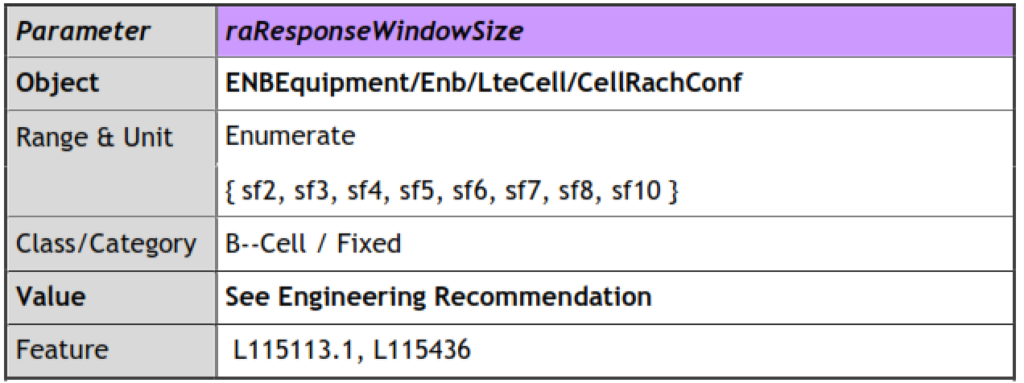
The mapping of parameter values to subframe numbers is as follows.
| raResponseWindowSize value: | RACH Msg1-Msg2 window size |
| sf2 | 2 subframes |
| sf3 | 3 subframes |
| sf4 | 4 subframes |
| sf5 | 5 subframes |
| sf6 | 6 subframes |
| sf7 | 7 subframes |
| sf8 | 8 subframes |
| sf10 | 10 subframes |
This parameter should be set as follows:


Random Access Failure.
If the Random Access Response or the Contention Resolution fails, the UE makes an immediate reattempt. The backoff capability described in the remainder of this section is optional and is not currently implemented. With the optional (future) capability, the UE backs off for a certain period of time selected randomly in the range [0, rABackoff], then restarts the procedure.
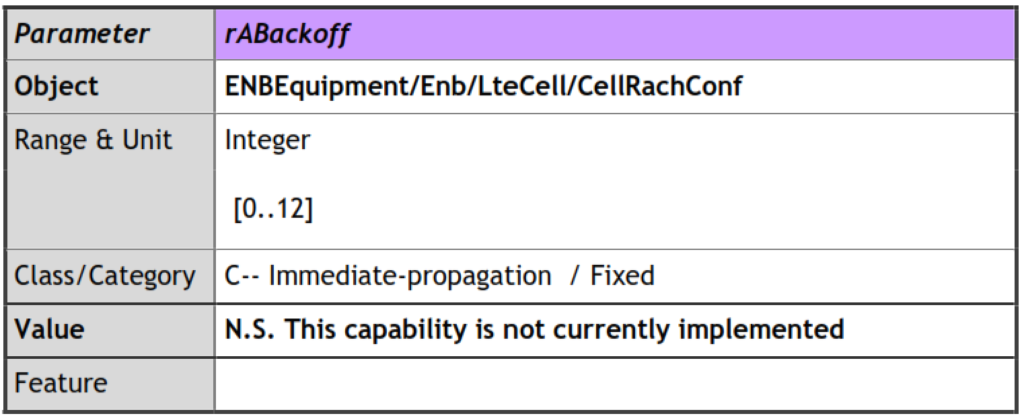
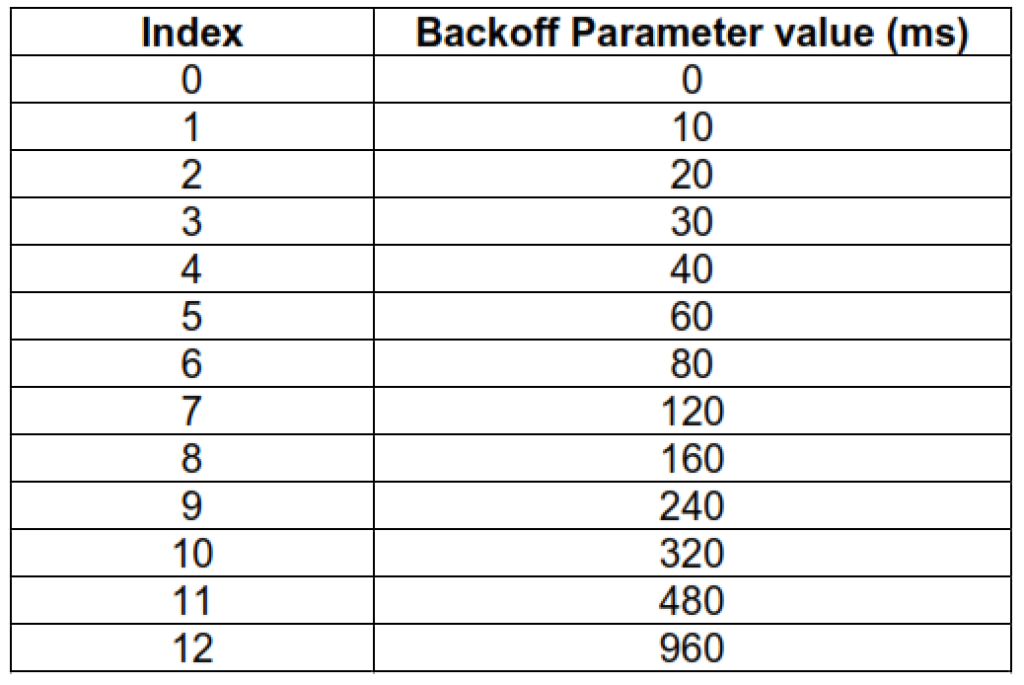
Based on the Backoff Parameter value from Table above, the UE selects a random backoff time according to a uniform distribution between 0 and the Backoff Parameter Value. When that time expires, and delays the subsequent RACH attempt by the backoff time.
Non-Contention Based Random Access Procedure.
The non contention-based random access procedure is illustrated in Figure below:

1) Message 0 (Random Access Preamble assignment): The eNB assigns a noncontention Random Access Preamble (not within the set broadcast on BCH). It is signaled either via a Handover Command generated by the target eNB and sent via source eNB (in case of handover) or via PDCCH in (case of data arrival).
2) Message 1: The UE sends the non-contention Random Access Preamble assigned in Message 0, via RACH.
3) Message 2: This message is generated by MAC on DL-SCH. It is intended for one or multiple UEs in one DL-SCH message. It conveys an RA-preamble identifier, and either timing advance and initial UL grant (in case the procedure is used in a handover scenario) or just timing advance (in case it is used for DL data arrival).
The number of Random Access Preambles available for the non-contention based Random Access procedure is (64 – numberOfRAPreambles) since the total number of Random Access Preambles is 64.
Random Access Failure.
After a certain number of attempts (configured by parameter preambleTransMax) the MAC layer declares the Random Access procedure as failed, and notifies higher layers of the failure.
